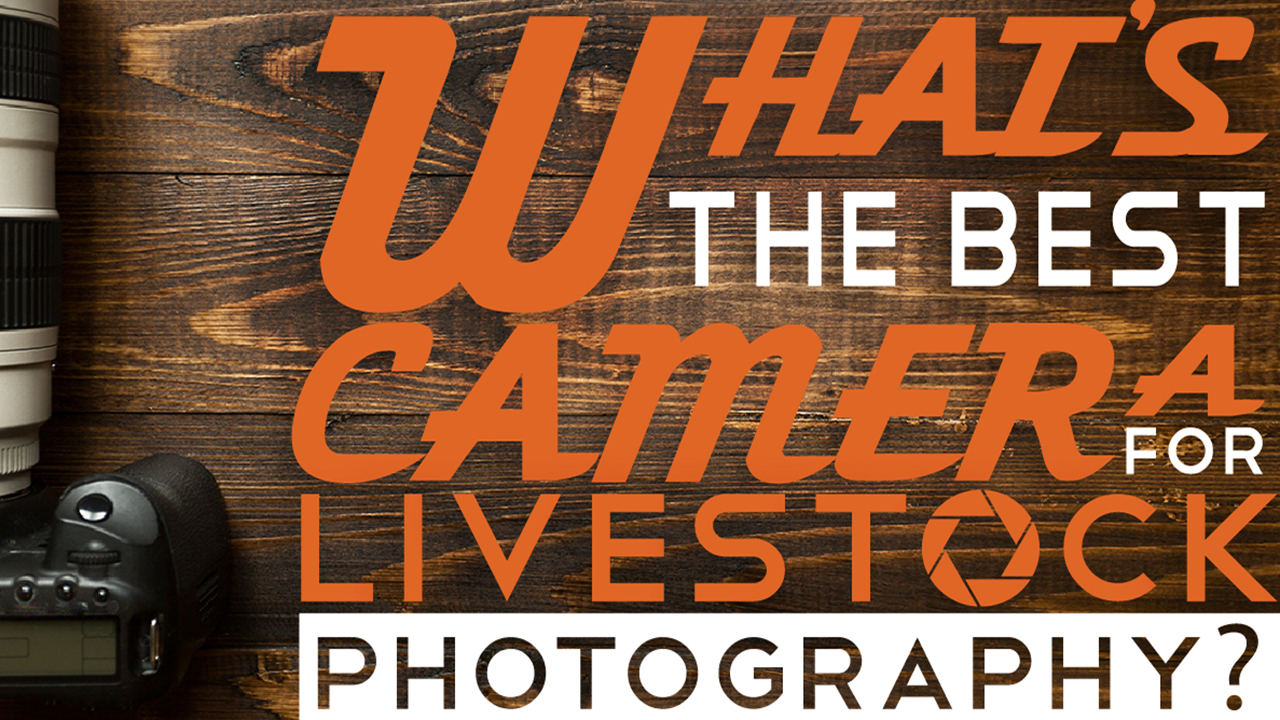What's the Best Camera for Livestock Photography?

There are many great cameras available today and thanks to technology it continues to become more affordable to buy better and better electronic equipment all the time. When people are getting ready to begin taking livestock photos, they often ask me what kind of camera they should buy, so I've put together this quick blog to help guide your camera buying experience and share with you my favorite rig for livestock photos, but before we get started, a word of caution;
GEAR POST WARNING: The fastest way to double your money is to fold it in half and stick it back in your pocket. You should get started taking pictures with the rig you have now and learn to become a better photographer. When you outgrow your equipment, you'll know it, and that's when you should start thinking about upgrading. Until then, put your energy into handling, posing, framing, shooting, and editing and keep your money in your wallet where it belongs.
Ok, let's talk cameras. . .
What brand of camera should I buy? The great debate is always Canon or Nikon, but today, there are tons of other great cameras out there as well. I can't attest to other brands, but I’ve shot with both Canon and Nikon cameras extensively and they're both great.
Here's the difference, as I've experienced it. I feel like my Nikon cameras focus faster and more accurately than my Canon cameras. I also like the exterior functionality/button placement and the intuition of the menu layouts of my Nikon cameras better, but that's likely just muscle memory because I learned on Nikon. I like the color interpretation of my Canon cameras a bit better than my Nikon cameras, but I can color grade my Nikon's images to look just like the Canon. Accordingly, Nikon is my go to for still photography, but my everyday camera in my current filmmaking business is a Canon.
What style of camera should I buy? If you have a DSLR body with interchangeable lenses, you’re ready to get started picturing livestock. Even the entry level cameras have enough power to get the job done. As your skills grow, you’ll want to switch out to a higher end model.
Full Frame or Crop Sensor? Most of the DSLR cameras that might make your list for consideration will fall into one of two categories when it comes to the size of the digital sensor inside the camera body. Full Frame sensors are the way to go if you can afford it because they will help you more effectively use your lens' maximum effective aperture, which will help you create photos with that beautiful blurry background look.
Crop sensors have two huge advantages. First, they tend to be way more affordable. Second, they will help you get more reach out of your zoom lenses. The same lens reaches about 1.7x farther on a crop sensor body than it does on a full frame sensor, and trust me, it will be a bit of an adjustment if you find yourself making the switch.
Can I buy used? Most people will tell you not to buy used electronics, and I understand why, but I strongly encourage people to consider buying used cameras. Most people who invest in a camera don't use them professionally, so there are tons of good used cameras available that haven't been shot very much, and they are available at drastically reduced pricing - because people don't like buying used electronics. It's kind of like buying a low mileage car. Retailers like B&H Photo rate their used equipment when they get it in, so you can understand how good of shape they think it's in before you buy. The mileage of a camera is the number of shutter actuations. It's literally how many pictures the camera has taken. They say most entry level DSLRs are rated for 100,000 shutter actuations, and I've never had a camera that needed repair with less than that. In fact, most of them lasted two or three times longer before needing any attention at all.
Another good reason to buy used is that when you're taking livestock photos, cameras get dirty, they can get dropped while jumping a gate, or take close encounters of the bovine kind. Nothing will make your heart sink like watching your $5,000 rig fall to the ground.
What rig do you use? My favorite camera for livestock photos has been my Nikon D610. I've had several of them and I found them to present a great value, a spectacular image size with enough detail to make great edits but a manageable RAW file size, and of course, all the advantages of a full frame sensor.
I'd love to answer your questions in the comments below, or head on over to our social channels to keep the conversation going!
B.J. Eick is the Founder of Learn Livestock, the Founder and C.E.O. of Herdmark Media, Inc., a writer, photographer, and filmmaker with a passion for animal agriculture. You can contact B.J. directly here.
Get our best tips delivered to your inbox.
Join our mailing list to receive weekly livestock photography tips delivered directly to your inbox. Take Better Photos. Make More Money.


